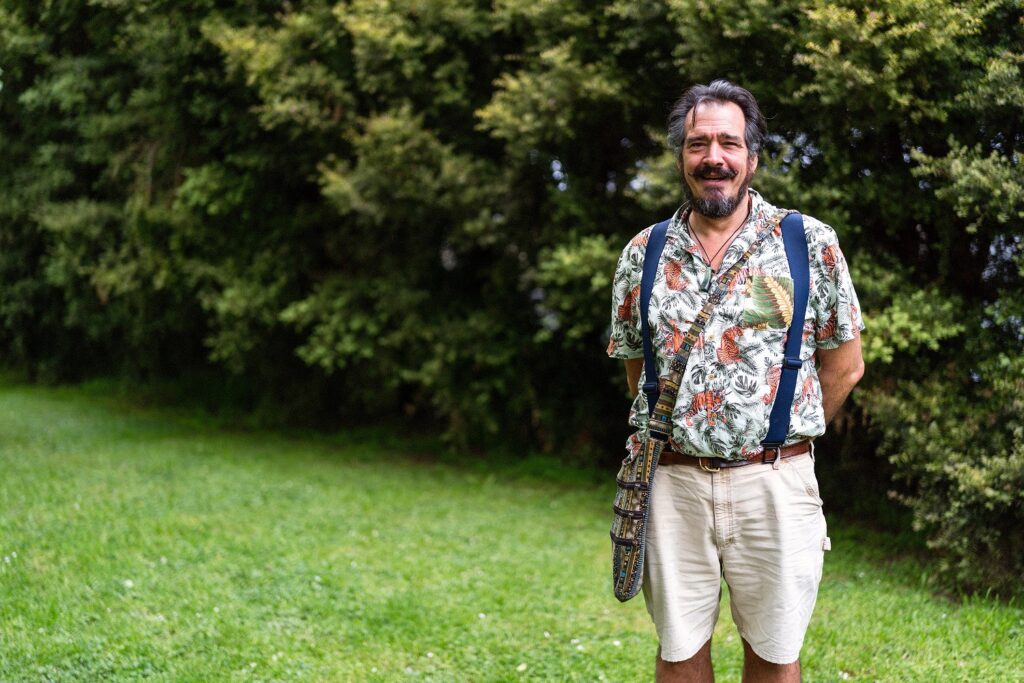
Introduction: Adam Cohen is an architect and builder, and an early adopter of both Passivhaus practices represented by the Passivhaus Institut in Darmstadt, Germany, and Passive House practices represented by the Passive House Institute US (PHIUS). He is responsible for nine of the 20 projects certified or pre-certified by the Passive House Institute US (PHIUS) in Virginia. Cohen is currently an Edmund Hillary Fellow and working with the Human Nest Project, a collective of entrepreneurs working to create pathways for sustainable economic and environmental growth.
The thing you have to understand about Passive House is that it’s not a check-box system. It’s all based on building physics calculations. It’s iterative. It’s collaborative. It’s creative. Design teams, build teams, engineering teams — in a well seasoned team everyone has the goal of optimizing performance. When you’re starting out in Passive House, the biggest issue is what I call the fear-premium and it’s a big curve that requires a lot of education and support. But, in the end, it’s a systems approach that’s not unlike the systems thinking that architects are really good at. And, any architect knows that systems must work in concert with each other to make a building work. There are dependencies. So, Passive House is doable, but it really requires everyone to embrace the dependencies and collaboration.
How do we bring architecture into alignment with the paradigm shift we all need to make? Everyone has to pull their weight. This isn’t 1980 or 1990. We’ve gone past the point where sustainability and resiliency is an add-on. It must be the driver. The people thinking about Passive House are so few and so far between in the broader world, and we don’t have time to argue. To me, it’s about building science and not politics. The message for the future of architecture is: we need to break down the walls that would cause two otherwise aligned people or institutions to work against the interests of each other and therefore the environment.
We tend to think of things as an on-off switch instead of a continuum. So, let’s look at the opportunities that we have in our companies and institutions. Let’s look at ourselves and see what we can contribute and what we need to learn.
I was the first to design and build a Passive House dental clinic, the first to design a Passive House student center in North America, the first to do a Passive House religious assembly building. I was the first to do these things because I was crazy enough to try, and not for any other reason. Now, there are lots of other folks doing Passive House, and New York, Boston, Philadelphia, Seattle, Portland, and Vancouver are knocking it out the park.
My work has moved on to high performance buildings through a manufacturing system that creates an emissions sequestering shell. So, the shell is an emissions sink, not an emissions source. I’m also part of the Human Nest Project, which has several goals including transforming the built environment as an emissions sink, not an emissions creator, and pursue regenerative economics to benefit social housing. We can build an emissions-sequestering project right now, but we lack all the materials we need. We lack the distribution required. If you have to import a product from a far-flung place to make your project eat carbon, it negates the project’s intentions.
One of the places that’s most exciting to me is New Zealand, where I do a lot of work now, which has folks in government who are actually listening to some of these ideas. One of them is that there are alternative economic models based on abundance, which imply there’s something called “enough.” Not “more,” but “enough.” And, I think it’s central to where we need to go in translating sustainability and building efficiencies and public perception. As architects, we bear a big responsibility in setting the direction of a project from the beginning. And, as architects, I think we bear a big responsibility to carry the message forward about environmental stewardship, which begins with climate action. Design is a verb, after all, and we need to act—and design—in the interests of the environment and our communities.
At the end of the day, building is about number crunching and optimizing costs. But, the Passive House system lets you optimize the energy performance of the building. My goal has always been to make the two meet. The thing about Virginia is that the climate is mild and therefore ideal for Passive House projects. It’s easy to do and, based on that, in Virginia, Passive House should be a cost-negligible construction approach. Unfortunately, it’s not. Not yet. We just don’t have enough people trained on it, but that can change.—As told to William Richards
Learn more about Cohen’s work at his YouTube channel Passivhaus For Everyone. William Richards is a writer and editorial consultant based in Washington, D.C. From 2007 to 2011, he was the Editor-in-Chief of Inform Magazine.
